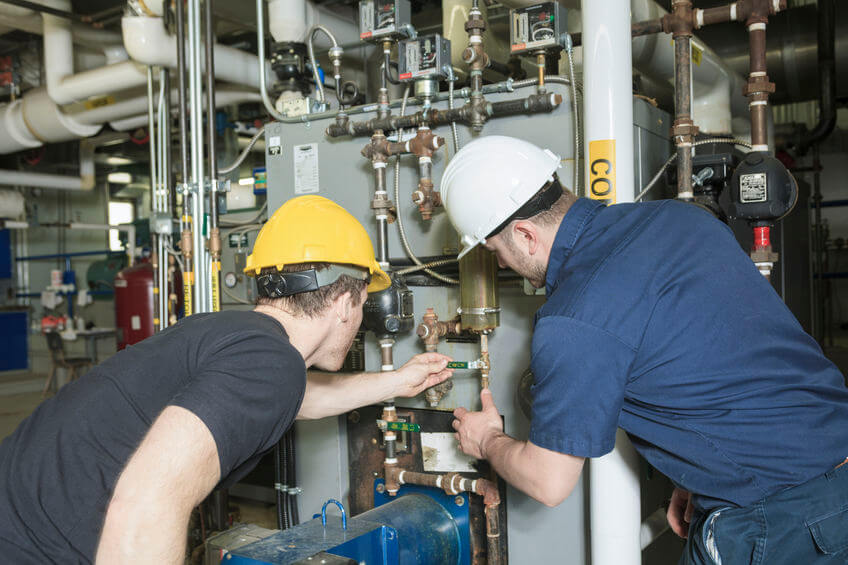According to SHRM, 10,000 Baby Boomers reach the age of 65 every day. Also referred to as the “silver tsunami,” the aging workforce – and the 31 million job vacancies that it is estimated to create – is a threatening prospect to business leaders across all industries. Facilities Maintenance is no exception. As the workforce ages, facility managers have developed new training methods for their less-experienced technicians.
Today’s facility managers face a unique resource planning and readiness challenge in that there is a growing knowledge gap between maintenance and engineering in less-experienced technicians. Ever-present, of course, is the need to meet occupant needs, yet the modern facility manager is also balancing system operations needs and resource management challenges.
A facility managers’ success is measured by several factors, such as energy and water efficiency, minimizing downtime of crucial systems, attentiveness to occupants and timely maintenance. Those in the facilities profession are charged with leading the team in focusing on tasks and accomplishing goals.
However, what can facility managers do to address the growing knowledge gap and lack of technicians? In order to achieve great building performance, facilities need to be maintained every day, which requires a focused and dedicated workforce. The facilities workforce needs to be able to both fully comprehend and actively complete the facility manager’s plan. To create this ideal workforce, successful facility managers have embraced the following methods.
Offer comprehensive training: A successful training program needs to be efficient, not elaborate. A well-designed program stays in line with organization and department practices, while offering a comprehensive view of training needs. The following categories are often included:
- General skills: emergency procedures, equipment safety, injury prevention, etc.
- Regulations: proper equipment handling and storage, confined-space entry, asbestos procedures, etc.
- Basic employment practices: department procedures, work orders, etc.
- Trade-specific certifications and licenses
Ensure preparedness: In-house and on-the-job training do not always cover every topic, here are two programs that can help fill in the gaps:
Building Efficiency for a Sustainable Tomorrow
This platform lists local training programs and publicly-funded colleges with programs in a wide variety of subjects, including facilities maintenance, HVAC controls, and building automation. It is part of a national effort designed to improve technician education and promote research, technology, and industry knowledge in energy-efficient buildings.
This is a free online training program offered by the U.S. Department of Energy’s Pacific Northwest National Laboratory. This building re-tuning program is designed to equip building operators to improve existing facilities. It focuses on building automation system data analysis, which helps to affordably identify and address problems in facility operations.
Prioritize training: It’s crucial that facility managers understand the importance of a highly trained workforce. Unfortunately, training programs are often the first to be cut during financial hardships; however, highly skilled and trained technicians can reduce operations costs while maintaining performance requirements by improving operational strategies. Training programs do not need to be expensive,but they do need to be efficient and accessible.
Benchmarking your building and keeping track of operations performance is a great way to show the need for training programs. By highlighting performance metrics such as response times, occupant feedback, crucial system downtimes, energy consumption, and maintenance completion rates, it’s easy to understand the value of comprehensive training programs.
In conclusion, there’s no denying that the workforce is changing. However, the solution is clear: it’s crucial that priority is placed on comprehensive technician training programs. The more knowledgeable and skilled the workforce, the smaller the knowledge gap will be and the better facilities will be run.
________________________________________________________________________________
About Lakeside Project Solutions:
With the above 7 habits in mind, Lakeside Project Solutions set out to cater to these traits in our operations and KPI development. Lakeside Project Solutions aids facility managers with an endless list of facility maintenance services, dedicated account managers and transparent performance reporting—everything is done right the first time. Working 24 hours a day, seven days a week, our quick, responsive facility maintenance and repairs keep your business running smoothly. A team of facility experts ensures that your service is always satisfactory, no matter what the request. Contact Lakeside Project Solutions to get started today!


